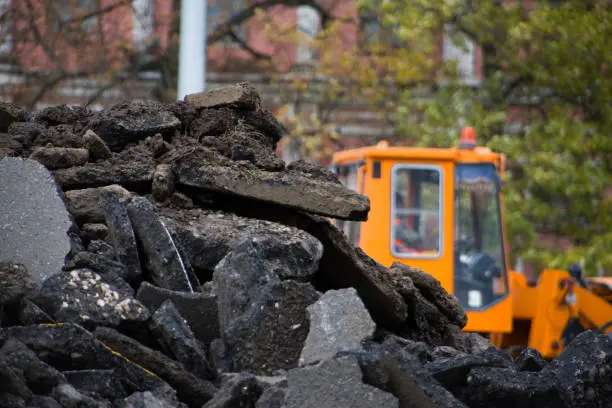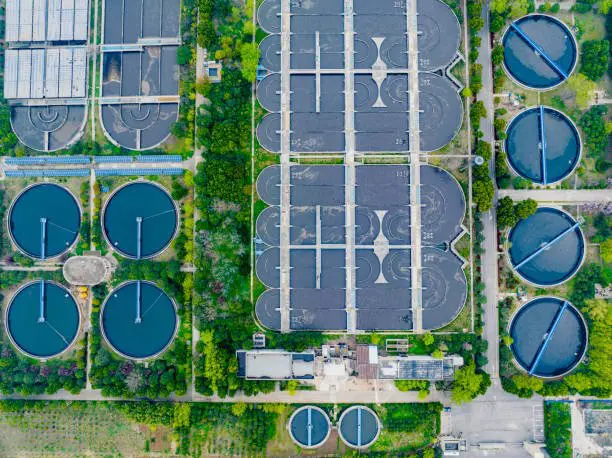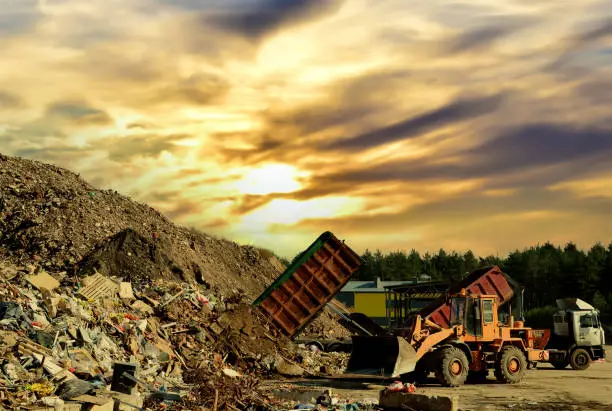How Concrete Recyclers are Transforming the Future of Sustainable Construction

The construction industry is under increased scrutiny in an era where environmental concerns and sustainable practices are at the forefront of global discussions. Concrete recyclers play a crucial role in this shift by providing a sustainable solution. The impact of construction on the environment, from resource depletion to energy consumption, necessitates a paradigm shift towards responsible construction practices.
As the construction industry expands, its impact on the environment, society, and long-term sustainability becomes increasingly significant. Responsible construction practices are vital for minimizing ecological footprints, conserving natural resources, and mitigating climate change.
5 Key Benefits of Concrete Recycling

Concrete recycling has become a cornerstone of sustainable construction practices, offering many environmental and economic benefits. We will discuss the transformative impact of concrete recycling, exploring five key advantages that highlight its significance in the construction industry.
1- Environmental Conservation:
Reduction in Resource Depletion: Concrete recyclers minimize the need for extracting raw materials, such as limestone and sand, preserving natural resources and mitigating environmental degradation.
Energy Efficiency: Traditional concrete production is energy-intensive, but recycling concrete significantly reduces energy consumption. The process involves crushing and repurposing existing concrete, resulting in lower energy requirements than manufacturing new concrete.
2- Waste Reduction and Landfill Diversion:
Mitigating Concrete Waste: The construction industry generates substantial concrete waste. Recycling concrete diverts this waste from landfills, alleviating the burden on landfill space and reducing the environmental impact of construction activities.
Extended Lifespan of Landfills: By diverting concrete waste, recycling extends the lifespan of landfills, allowing for more sustainable waste management practices.
3- Cost-Efficiency in Construction Projects:
Reduced Raw Material Costs: Concrete recycling offers cost savings by reducing the reliance on new raw materials. Contractors can benefit from lower material procurement costs, contributing to more economical construction projects.
Lower Disposal Costs: Disposing of concrete waste in landfills can incur significant costs. Recycling concrete minimizes disposal expenses, making it a financially viable option for construction companies.
4- Carbon Footprint Reduction:
Emission Reduction: Traditional concrete production is associated with substantial carbon dioxide emissions. Concrete recycling significantly lowers carbon emissions by decreasing the need for manufacturing new concrete, thus contributing to a greener and more sustainable construction industry.
Promoting Green Building Practices: As the construction industry increasingly embraces sustainable building practices, concrete recycling is crucial in achieving environmentally friendly and energy-efficient structures.
5- Promotion of Circular Economy:
Closed-Loop System: Concrete recycling exemplifies the principles of a circular economy by creating a closed-loop system. Repurposing existing concrete materials reduces the demand for new resources, promoting a more sustainable and circular approach to construction.
Encouraging Industry Innovation: Concrete recyclers encourage innovation in the construction sector, fostering the development of new technologies and methodologies that align with the principles of a circular economy.
The Energy-Saving Benefits Of Using Recycled Concrete In Construction

- Using recycled concrete aggregates diminishes the need for mining natural aggregates like sand and gravel, leading to substantial energy savings and mitigating the environmental impact of extraction activities.
- Incorporating recycled concrete into construction projects promotes a closed-loop system, aligning with the principles of a circular economy by reusing existing materials and minimizing the demand for new resources
- The energy-saving benefits of recycled concrete extend throughout its lifecycle, from the initial recycling process to the construction phase, resulting in a more energy-efficient and environmentally friendly choice for infrastructure development.
Financial Advantages For Construction Companies In Adopting Concrete Recycling
There are several financial advantages for construction companies in adopting concrete recycler practices. Here are key points highlighting these benefits:
1- Cost Savings on Raw Materials:
One of the primary financial advantages is the potential for cost savings on raw materials. Utilizing recycled concrete reduces the need to purchase new aggregates, leading to direct cost reductions in material procurement.
2- Lower Disposal Costs:
Concrete waste disposal in landfills can incur significant disposal costs for construction companies. Adopting concrete recycling minimizes these disposal expenses, contributing to overall cost savings.
3- Reduced Transportation Costs:
Transporting heavy construction materials, especially over long distances, can substantially cost construction projects. Concrete recycling facilities strategically located near construction sites can reduce transportation costs associated with delivering new materials.
4- Potential Revenue from Recycled Materials:
Construction companies can generate additional revenue by selling recycled concrete aggregates to other construction projects or industries. When processed and of high quality, the recycled materials have market value, creating a potential income stream for the company.
5- Financial Incentives and Rebates:
Some regions offer financial incentives, grants, or rebates for construction companies that adopt sustainable and environmentally friendly practices such as concrete recycling. Taking advantage of these incentives can provide financial benefits.
6- Long-Term Economic Viability:
While there may be initial investments in setting up recycling facilities, the long-term economic viability of concrete recycling is evident. Reduced reliance on new raw materials and lower disposal costs contribute to the overall financial sustainability of construction projects.
7- Enhanced Corporate Social Responsibility (CSR):
Embracing concrete recycling aligns with corporate social responsibility initiatives. Companies demonstrating environmental stewardship and sustainable practices may gain preferential treatment in the market, attracting environmentally conscious clients and enhancing their corporate image.
8- Meeting Green Building Standards:
Some construction projects and Concrete recyclers prioritize using recycled materials, especially those aiming for green building certifications. Construction companies adopting concrete recycling can position themselves favourably for such projects, expanding their market opportunities.
Real-world examples of successful concrete recycling projects
Several real-world examples showcase the success of concrete recycling projects, highlighting the positive impact on sustainability, cost-effectiveness, and environmental conservation. Here are a few notable examples:
The Inner West Light Rail Extension, Sydney, Australia:
- In the extension of the Inner West Light Rail in Sydney, demolished concrete structures were recycled and reused to construct the new infrastructure. This project exemplifies how concrete recycling can be seamlessly integrated into large-scale urban development, reducing the environmental impact and contributing to a circular economy.
The Willis Tower Renovation, Chicago, USA:
- The renovation of the iconic Willis Tower in Chicago involved extensive concrete recycling. Demolished concrete from the original structure was crushed and repurposed to construct the tower’s new foundation. This project demonstrates how concrete recycling can be a key component in preserving historic structures while adopting sustainable building practices.
The Crossrail Project, London, UK:
- The Crossrail project in London, one of the largest infrastructure projects in Europe, incorporated concrete recycling as part of its sustainable construction strategy. Demolished concrete from tunneling and station construction was recycled on-site, reducing the need for new materials and minimizing the project’s environmental footprint.
The Alaskan Way Viaduct Replacement, Seattle, USA:
- Replacing the Alaskan Way Viaduct in Seattle involved recycling the concrete from the old structure. Crushed concrete was repurposed as a base material for the new roadway, showcasing how concrete recycling can be integral to large-scale infrastructure replacement projects.
The Green Square Library and Plaza, Sydney, Australia:
- In constructing the Green Square Library and Plaza in Sydney, recycled concrete was used extensively. The project focused on sustainability, incorporating recycled materials to achieve a 6-Star Green Star rating. This exemplifies how concrete recycling can contribute to green building standards and environmentally friendly urban development.
The King Street Bridge Reconstruction, Kitchener, Canada:
- The reconstruction of the King Street Bridge in Kitchener, Ontario, involved the removal of the existing concrete deck, which was then recycled and used as fill material. This project demonstrates the practical application of concrete recycling in bridge reconstruction, reducing the environmental impact and minimizing waste.
Conclusion
In a nutshell, concrete recycling is a game-changer for the construction industry. It cuts waste, saves money, and is a big environmental win. By reusing old concrete, we’re not just building structures; we’re building a greener, more sustainable future. It’s time for builders, communities, and everyone to make concrete recycling the norm – because a responsible and eco-friendly construction approach benefits us all.
What are the main benefits of using a concrete recycling machine?
The main benefits include reducing landfill waste, conserving natural resources by reusing aggregates, lowering the carbon footprint of construction projects, and contributing to sustainable building practices.
What materials can be recycled at a concrete recycling plant?
Concrete recycling plants typically accept a variety of materials, including broken or discarded concrete, asphalt, and masonry. These materials are processed and transformed into recycled aggregates for new construction projects.
Where can I find free concrete recycling services?
Concrete recycling free services may be available through local recycling centers, municipal programs, or initiatives supported by environmental organizations. Check with local authorities or waste management agencies for information on free recycling options.

Similar Posts
HRMS Globex: Simplifying Workforce Management for Success
How It All Started: The Most Important Milestones within the Evolution of Malware
The Ultimate Guide to Enterprise SEO